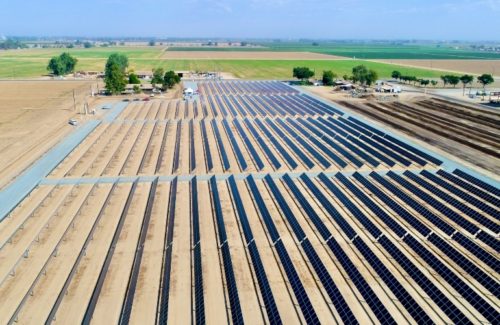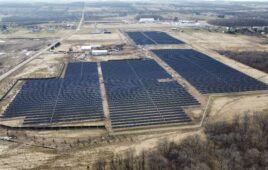
Credit: Solar FlexRack
The California Public Utilities Commission (CPUC) approved new plans to ensure long-term sufficient electricity resource investments, including transmission, for the safe and reliable delivery of electricity and the reduction of greenhouse gas (GHG) emissions.
The CPUC, per Senate Bill 350 (De León, 2015), developed an integrated resource planning (IRP) process to ensure that California’s electric sector meets its GHG reduction goals while maintaining reliability at the lowest possible costs.
The February decision adopts a 35 million metric ton (MMT) 2032 electric sector GHG planning target, which is more stringent than the 46 MMT GHG target that was adopted previously, and equates to 73% Renewables Portfolio Standard (RPS) resources and 86% GHG-free resources by 2032. The state’s long-term RPS goal, as set in the legislature, is to reach 100% by 2045.
The decision adopts a portfolio of cost-effective preferred resources that includes approximately 25,500 MW of new supply-side renewables and 15,000 MW of new storage and demand response resources by 2032; enough clean energy to power approximately 11.5 million homes. This preferred system plan portfolio differs from the one previously adopted in that it includes more solar and battery storage, as well as new long-duration storage, out-of-state wind and offshore wind resources. The inclusion of offshore and out-of-state wind resources demonstrates their increased viability as cost-effective resources to help meet state goals. The CPUC’s modeling and independent analysis conducted by the California Energy Commission demonstrates that the portfolio meets stringent reliability standards.
The CPUC’s preliminary analysis of the preferred system plan portfolio of the load serving entities (LSEs) indicates there is sufficient space for all of these new resources on the existing transmission system, with only limited transmission upgrades needed by 2032. This finding will be validated at a more granular level by the California Independent System Operator (CAISO) in its 2022-2023 Transmission Planning Process (TPP). The TPP is an evaluation of the CAISO transmission grid to identify grid upgrades needed to address reliability, meet state policy goals, and provide economic benefits.
This decision also orders utility procurement of two battery storage projects that were identified by the CAISO as alternatives to transmission upgrades in the previous TPP cycle. These alternatives achieve the same level of system reliability at lower costs to ratepayers.
“Today’s decision provides direction for procurement of an unprecedented amount of new clean energy resources. It keeps us on the path toward achieving our state’s ambitious clean energy targets, while ensuring system reliability,” said Commissioner Clifford Rechtschaffen.
IRP is a multi-year process. The first half of this IRP cycle analyzed and adopted an optimal portfolio of electricity resources as a guide for LSEs to use for meeting their GHG, reliability and cost objectives. The second half of the IRP cycle, which is the subject of this decision, is designed to consider the portfolios and actions that each LSE proposes for meeting these goals, to allow the CPUC to review each LSE plan and aggregate LSE portfolios to develop a preferred system plan portfolio, and to consider whether further action by the LSEs, such as additional procurement, is needed to meet state goals. The Preferred System Plan adopted now completes the second half of the 2019-21 IRP cycle. For the upcoming cycle of IRP, the CPUC will again focus on analysis of the individual LSE plans to be filed in November 2022, which will include plans to procure the 11,500 MW of capacity required for mid-term reliability in the CPUC’s June 2021 decision.
News item from the CPUC





Tell Us What You Think!